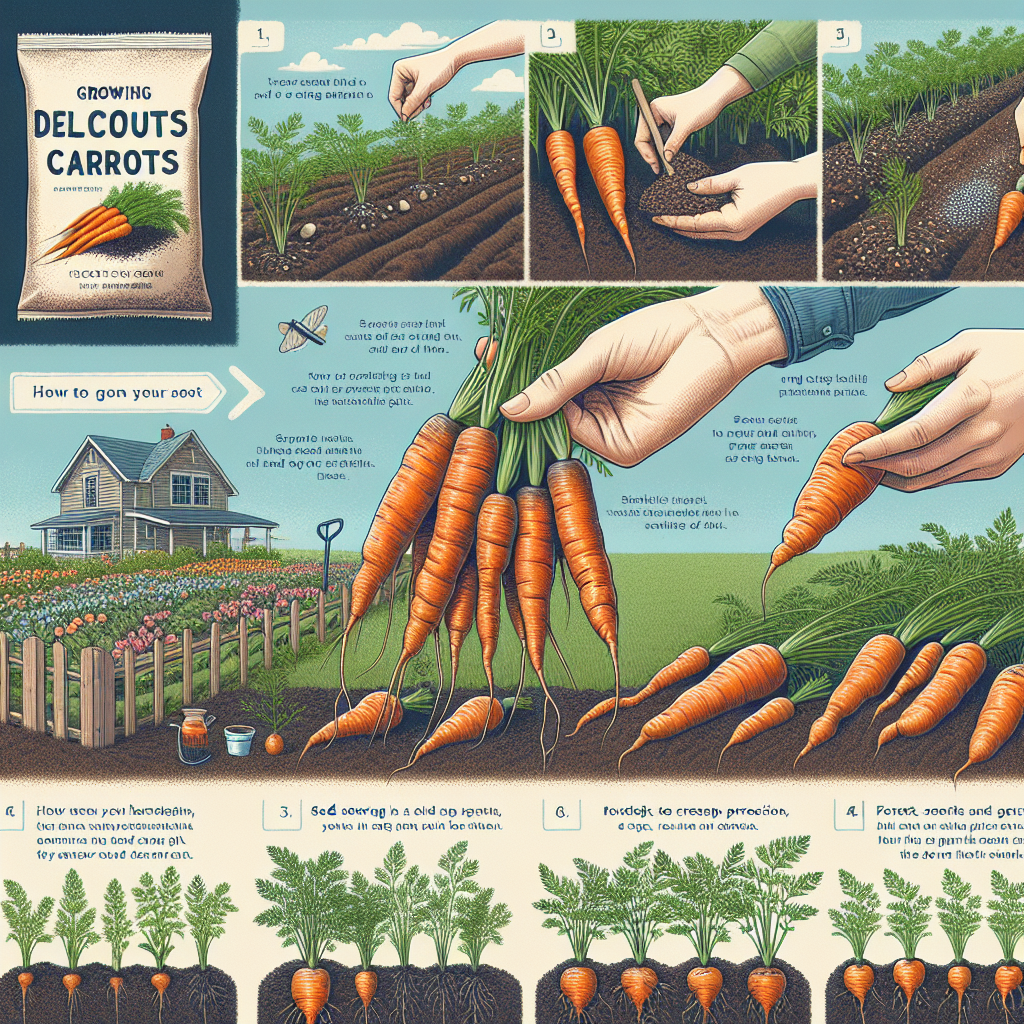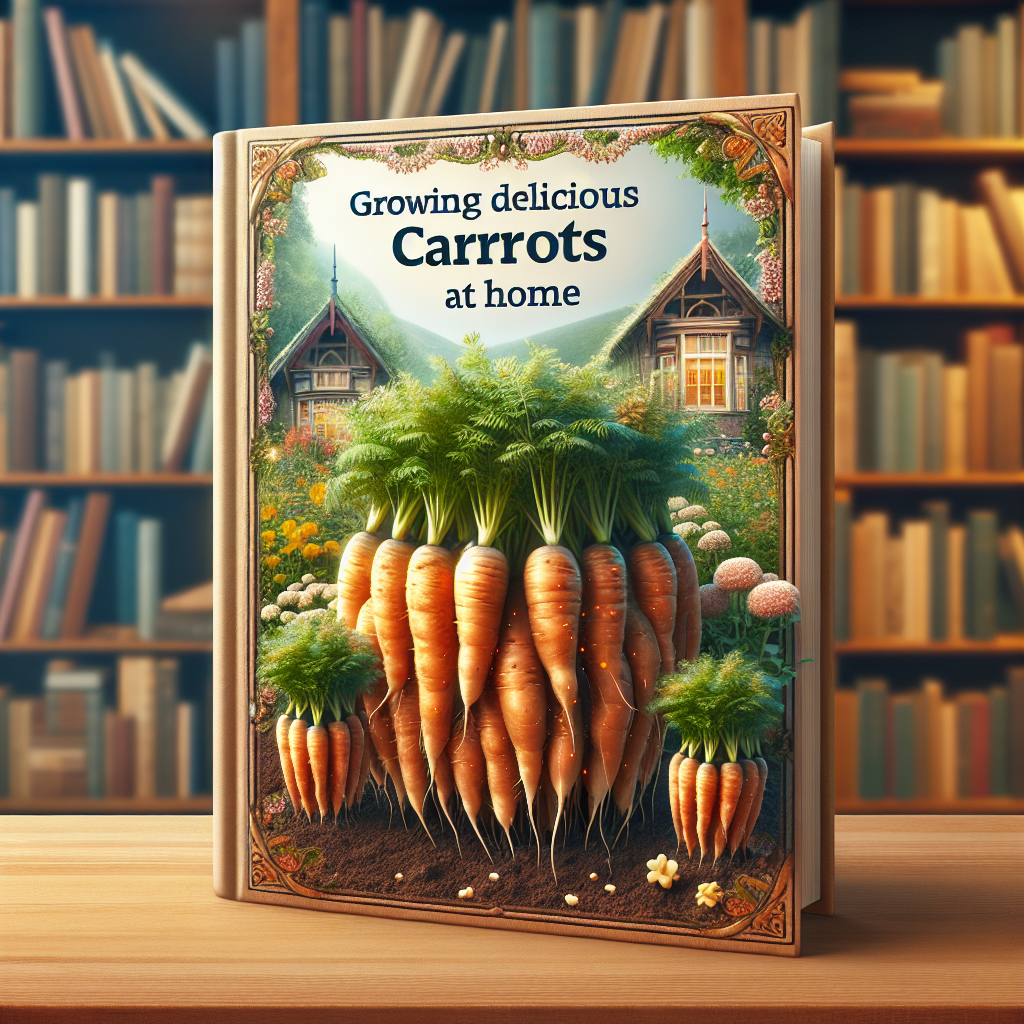Growing Delicious Carrots at Home: A Comprehensive Guide
Carrots are not just a healthy addition to your diet but can also be a rewarding and satisfying vegetable to grow at home. With their vibrant colors, sweet taste, and versatility in culinary preparations, growing carrots in your backyard or even in containers is a great way to connect with nature and enjoy the fruits of your labor. In this comprehensive guide, we will explore everything you need to know about growing delicious carrots at home.
1. Choosing the Right Variety:
Carrots come in various shapes, sizes, and colors. When selecting the variety to grow, consider your climate, available space, and personal preferences. Some popular varieties include Nantes, Danvers, Chantenay, and Imperator. Each has its own unique flavor profile and growth characteristics.
2. Preparing the Soil:
Carrots thrive in loose, well-draining soil. Start by removing any rocks or debris from the planting area. Loosen the soil using a garden fork or tiller to ensure good root penetration and prevent stunted growth. Add compost or well-rotted manure to enhance soil fertility and improve moisture retention.
3. Sowing Seeds:
Carrots can be grown directly from seeds as they do not transplant well due to their delicate roots. Sow carrot seeds directly into the prepared soil by making shallow furrows about half an inch deep and spaced around 2 inches apart. Lightly cover the seeds with soil and keep them consistently moist until germination occurs (usually within 7-14 days).
4. Proper Watering:
To ensure successful carrot growth, it is crucial to provide adequate moisture without overwatering them which can lead to rotting or splitting of roots. Water deeply but infrequently, ensuring that the soil remains consistently moist but not waterlogged. Mulching can also help retain moisture while keeping the weeds at bay.
5. Thinning Seedlings:
Once the carrot seedlings are around 2 inches tall, thin them to provide sufficient space for each plant to grow. Crowded carrots will result in stunted and misshapen roots. Gently pull out the weaker seedlings, leaving an inch or two gap between the remaining ones.

6. Weed Control:
Weeds can compete with carrots for nutrients and water, hampering their growth. Regularly inspect your carrot bed and remove any weeds by hand, being careful not to disturb the young carrot roots.
7. Fertilization:
Carrots are relatively light feeders, but they will benefit from a well-balanced fertilizer application during their growing period. Use organic fertilizers such as compost or aged manure to supply essential nutrients gradually throughout the growing season.
8. Pest Prevention:
Although carrots are generally resistant to pests, some common culprits include carrot flies and aphids. To deter these insects, consider using row covers or companion planting with fragrant herbs like dill or marigold.
9. Harvesting:
Carrots are typically ready to harvest within 70-80 days of sowing, depending on the variety. Look for tops that have fully developed foliage and gently pull out the roots from the soil, ensuring not to damage them in the process. Freshly harvested carrots can be enjoyed immediately or stored in a cool, dark place for extended shelf life.
10. Storing Carrots:
To store your homegrown carrots, remove excess soil without washing them as this can introduce moisture that leads to decay. Trim off any damaged or green parts but leave an inch of green tops intact to maintain freshness. Store them in perforated plastic bags inside a refrigerator’s crisper drawer where they can stay crisp for several weeks.
In conclusion, growing delicious carrots at home is a gratifying experience that allows you to enjoy these nutrient-packed vegetables straight from your garden or patio. With proper attention to soil preparation, watering, weeding, and pest control, you can harvest a bumper crop of carrots to savor in your favorite culinary creations. So, roll up your sleeves, grab your gardening tools, and embark on the journey of cultivating your very own homegrown carrots.














